A small puddle of green liquid has formed under your car. By opening the engine hood to get a closer look, you can spot where the leak is coming from. There is a noticeable crack in the radiator. "How long will it take to replace this?" you wonder. Because we've done the homework for you, we have some helpful information to share.
Replacing a radiator can take between two and eight hours. Experienced mechanics can do it in as little as two or three hours. On the other hand, it might take up to eight hours if an inexperienced mechanic does the job.
In this post, we will give you an idea of what they do at the auto repair shop when you have a radiator replaced and how long the process can take.
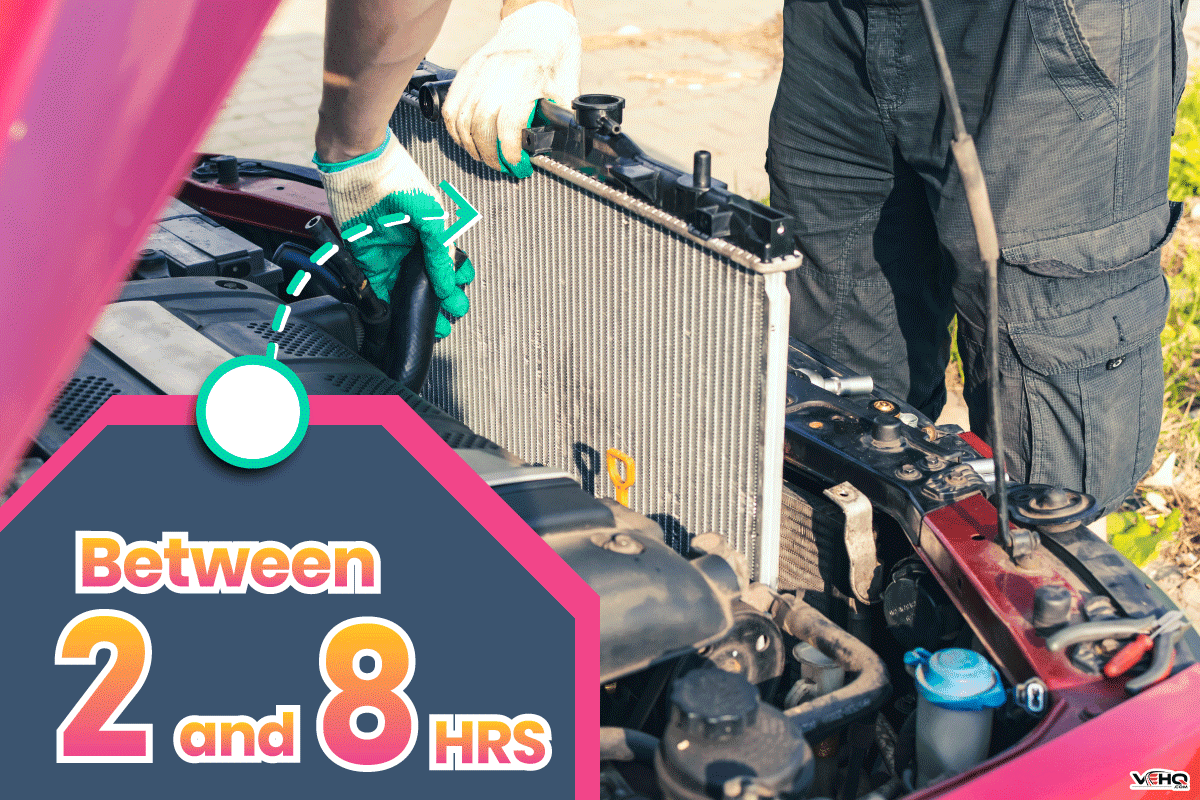
How Long Does It Take To Replace A Radiator?
Replacing a radiator is much more complex than most people realize. It may take your mechanic at least two to three hours or a maximum of seven to eight hours to complete the task.
The mechanic has to deal with the vehicle's cooling system and other systems, such as the A/C and transmission. He also has to painstakingly remove and then reinstall a hydra of electrical connectors, belts, fasteners, and hoses.
If your radiator has failed due to age, other parts might soon fail, also. The mechanic must scrutinize the radiator cap, check the fan belts for damage or cracked rubber, and make sure the radiator hoses have no leaks.
A damaged drain plug could be leaking coolant. If your vehicle is a diesel, SUV, or pickup truck, it will most likely have a fan clutch that must be refilled with clutch oil.
Replacing Additional Components
Instead of just replacing the radiator, consider it mandatory to replace these components: the thermostat, engine water pump, and heater core. These items commonly stop working soon after the radiator goes bad.
Having the radiator separated from the engine makes these parts accessible. Replace them now so that it's all one job, and do not try to save money by putting it off.
Removing And Replacing A Radiator
Safety is the most important priority when removing and replacing your radiator.
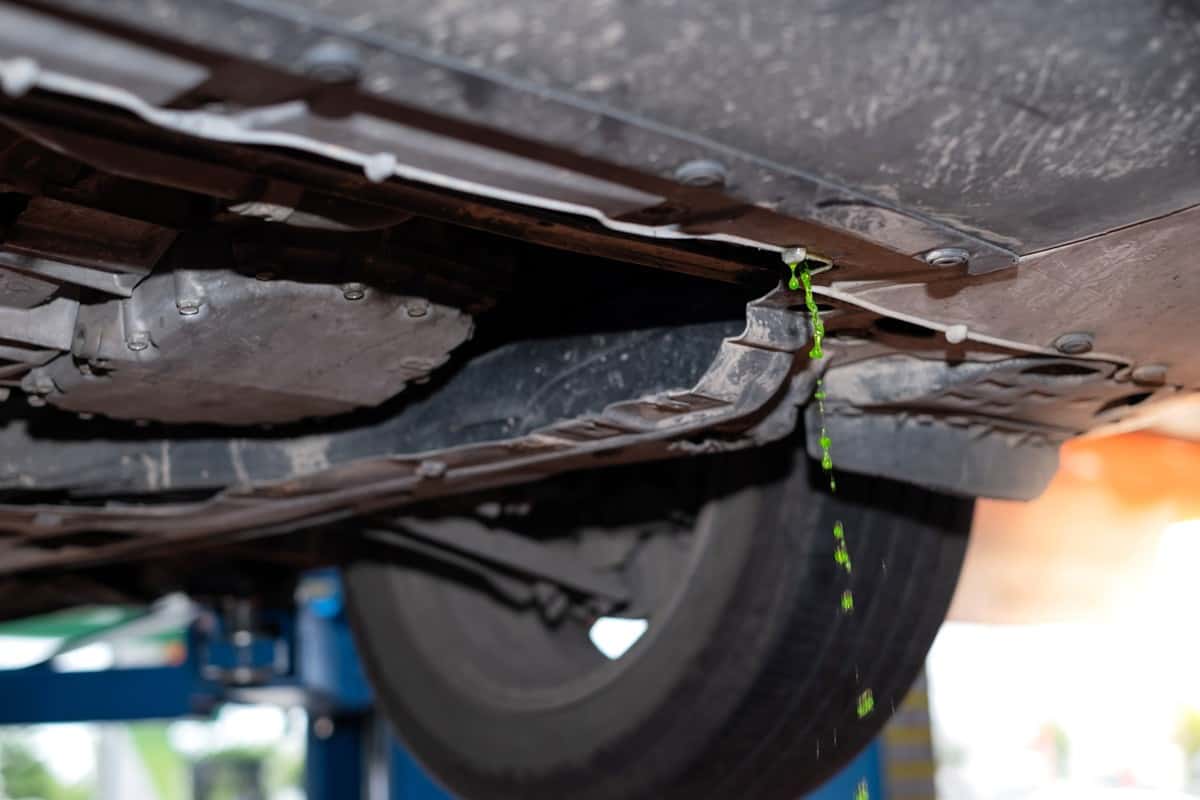
So that the mechanic doesn't get burned on the engine or scalded by coolant, he has to wait at least a half hour for the engine to cool down. He uses this time to prepare the tools needed and check that replacement parts are on hand.
A vehicle lift, or jacks and stands, elevates the vehicle. The battery has to be disconnected to protect electrical components.
See this radiator pressure test kit on Amazon.
Draining The Old Coolant
The mechanic first removes the radiator cap, then the drain plug, and he also disconnects the bottom radiator hose, draining all the old coolant out. He captures the spent coolant in a container and disposes of it properly.
Disconnecting The Radiator
A lot of hoses, clamps, and bolts connect to a radiator. To disconnect the radiator from these parts, the mechanic removes the items in the following order:
- Radiator reservoir hose
- Upper radiator hose
- Lower radiator hose
- Cooling fan connector
- Cooling fan mounting bolts
- Cooling fan
- Cooling fan shroud
- Transmission cooler lines (only vehicles with automatic transmissions have this)
- A/C condenser mounting bolts
- Radiator mounting bolts
After installing a new radiator, your mechanic must put the parts back in the opposite order.
Removing The Radiator
Once the radiator is free from all the lines, bolts, and hoses, the mechanic should be able to remove it from the vehicle either by lifting it up and out or by moving it from below the vehicle.
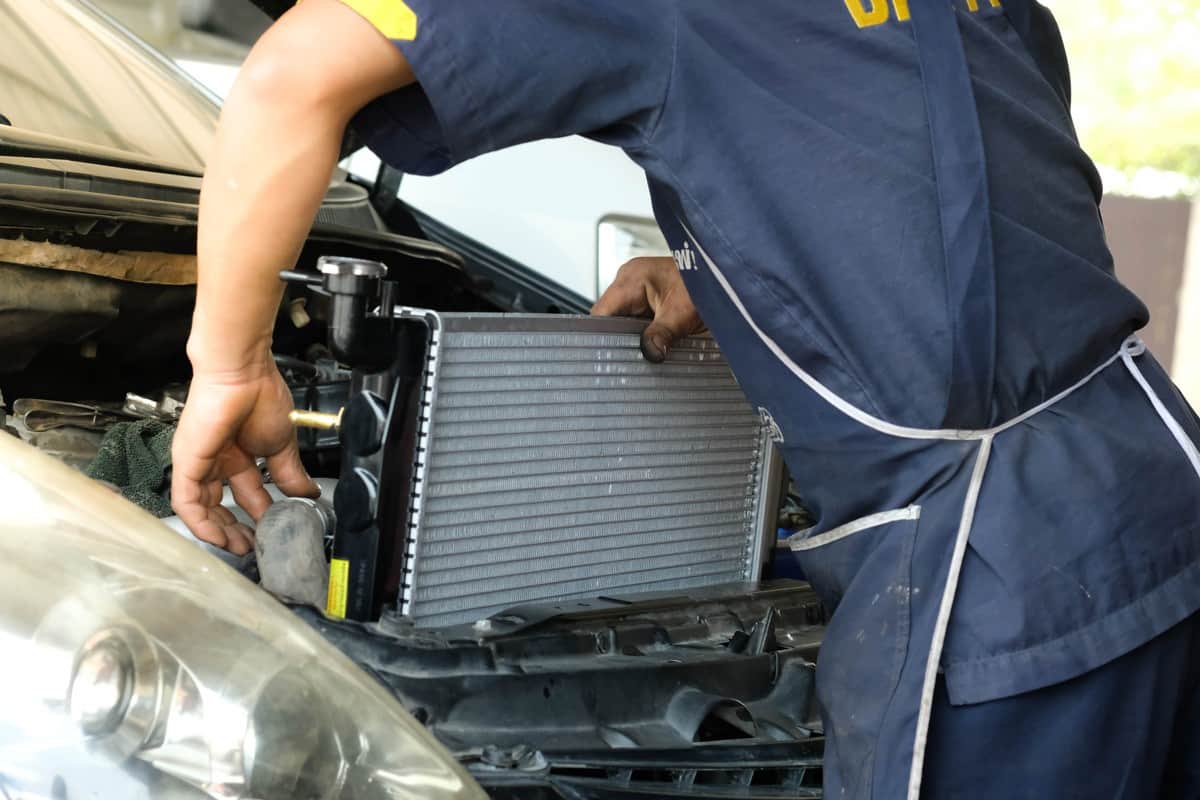
Installing The New Radiator
Your mechanic installs the new radiator. Among that pile of belts and hoses, he evaluates the condition of each part because this is the time to replace failing components of the vehicle's cooling system.
Are all the radiator mounting bolts in top shape, and does the A/C condenser have any damage? Are the radiator hoses pliable, or do they feel hard and brittle? Read here how electric radiator cooling fans can fail.
The reinstall starts this time with the radiator mounting bolts and ends with the reservoir hose.
Flushing the Radiator
The mechanic installs everything properly, being very careful to get it right. He fills the radiator to the brim with distilled water and screws the radiator cap back on. He starts the engine and lets it run for 10 to 15 minutes, allowing the distilled water to heat up to the boiling point.
Boiling water cleans the inside of your engine, flushing out any loose debris or corrosion along with the last of the old coolant.
Switching the engine off and opening the drain plug and lower radiator hose, he drains the distilled water and gunk out of the engine and into a drain pan.
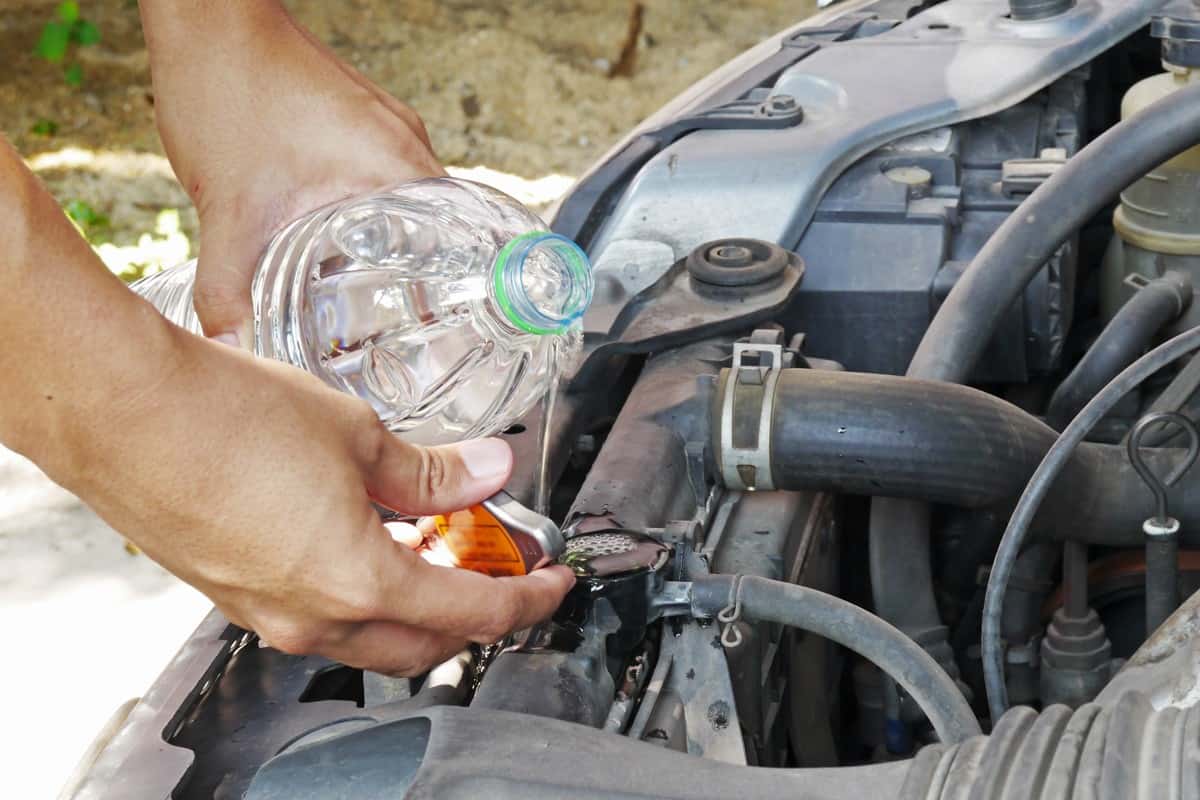
Adding New Coolant
Your mechanic checks the vehicle's manual for the recommended coolant/water ratio, but from experience, he knows it's usually a 50/50 mixture. He adds the new coolant and tightly closes the drain plug and lower radiator hose.
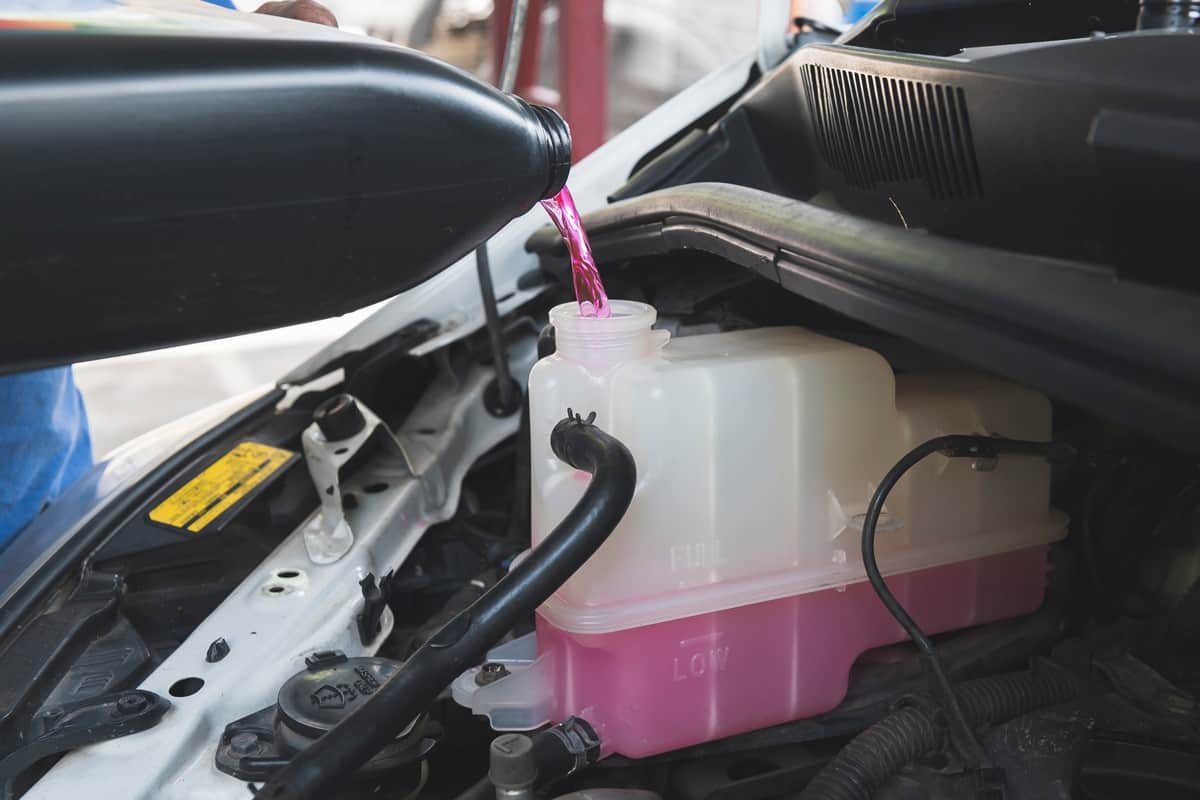
Bleeding Air Out Of The Cooling System
Changing coolant traps air inside a radiator. So this reduces the radiator's ability to disperse heat from the engine, causing the engine to overheat. The radiator fins need to be full of coolant, not air.
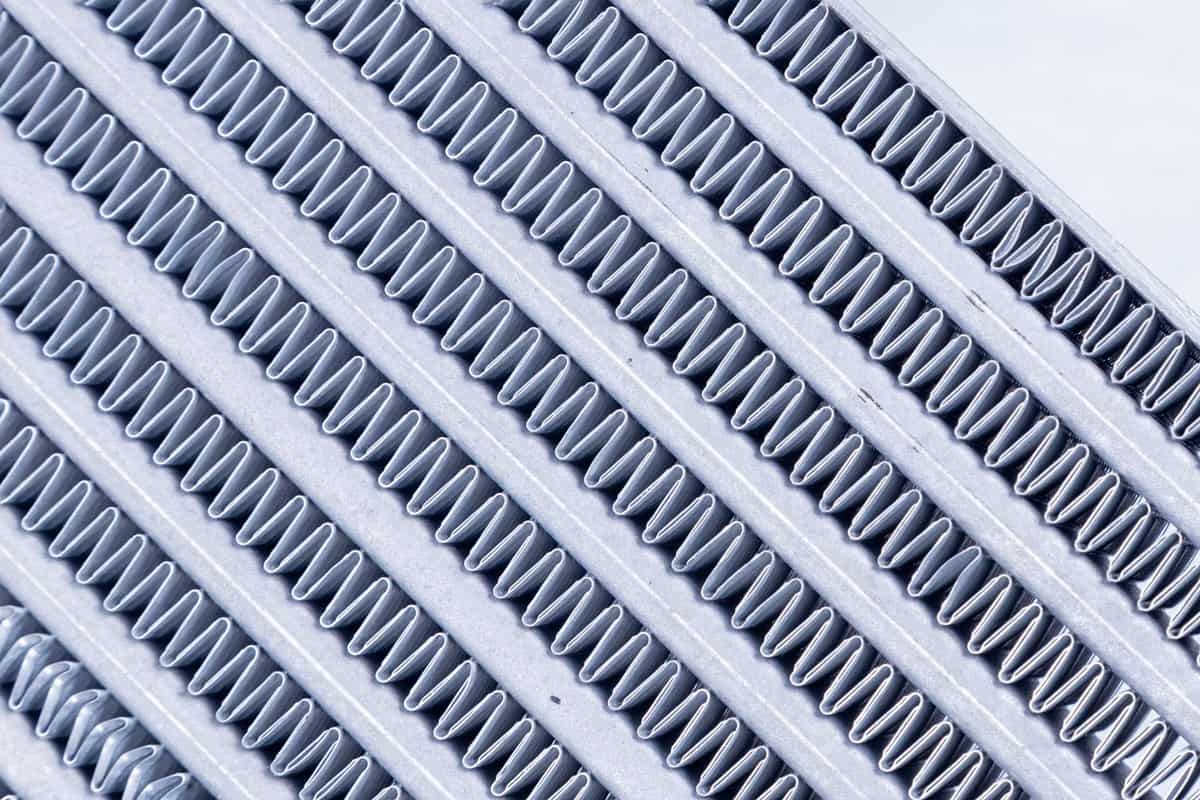
Bleeding the air out takes 10 to 20 minutes. Your mechanic fills the radiator and reservoir tank to the brim with coolant and leaves the radiator cap off. He starts the car and idles the engine until the thermostat opens.
He keeps an eye on the engine temperature through the dashboard gauge, making sure the needle stays between H and C. Heat expands the coolant, creating pressure that drives the air out of the radiator.
When the gurgling sounds cease, he adds more coolant to the radiator. He tops the radiator up with coolant until it's full, and then he screws the radiator cap on tightly.
Checking For Leaks
The radiator replacement is a success if there are no leaks anywhere.
Repairing Vs. Replacing A Radiator
Cars made before the 1980s commonly used copper-brass radiators. The manufacturing method they used during that period involved soldering.
When a tin and lead alloy is heated to 600 °F, it liquefies. When it cools and solidifies, it acts as a glue, binding the copper and brass together.
You can use a chisel to separate the copper parts of a damaged radiator from the brass parts, replace them, and then solder them back together. It works as long as the damage is small.
Modern car manufacturing has shifted to using aluminum and plastic in radiators. Unfortunately, using these materials makes current radiators irreparable.
Fixing aluminum radiators is not economical. When you put a radiator to use, metal fatigue sets in. The metal in the radiator expands and shrinks as it heats and cools, weakening it. Aluminum is softer than copper-brass, therefore, more easily damaged.
Under repeated high temperatures and given time, this leads to warping and even cracking. Attempts to use soldering techniques, such as brazing, to repair cracks do work.
However, the cost of a skilled aluminum welder and the specialized equipment needed make replacing radiators much more cost-effective.
What Happens If You Don't Replace The Radiator?
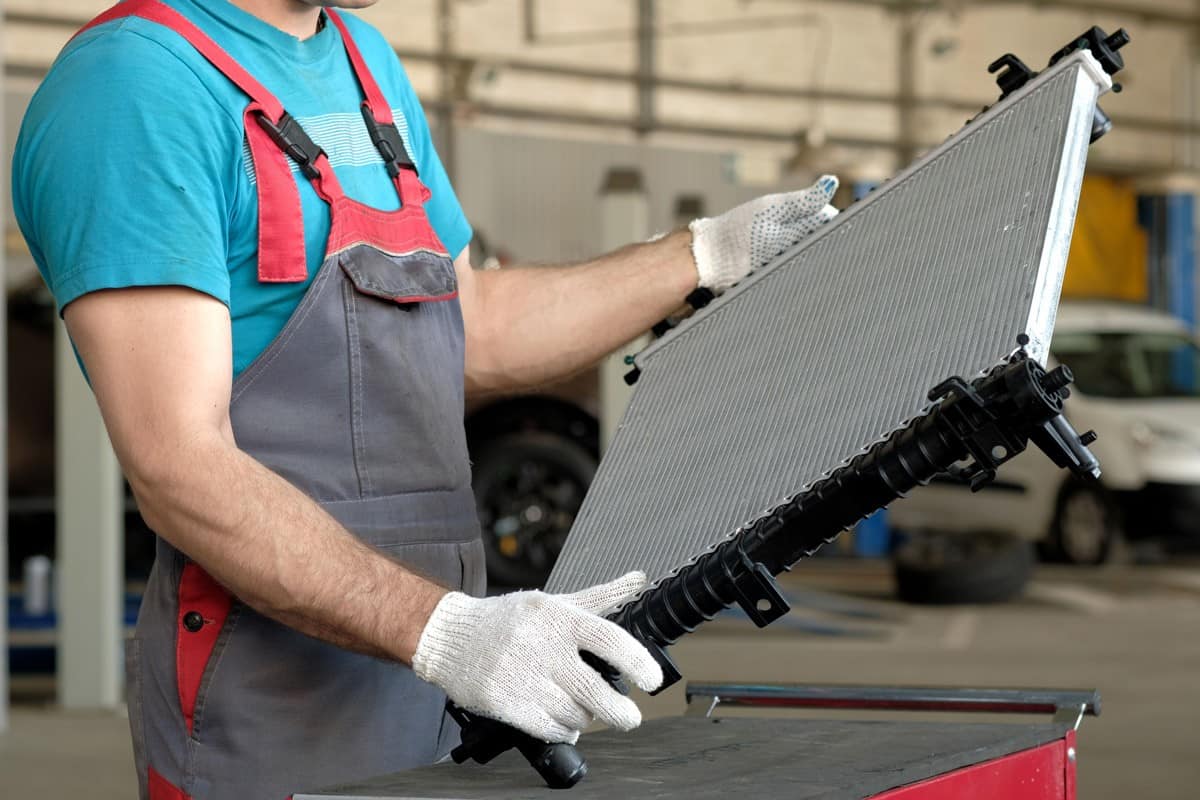
If you know your radiator is leaking and you ignore it, these scenarios could happen. Let's say you're driving, and because there is pressure in a radiator, the leak grew in size, and all the coolant leaked out. This will lead to your engine overheating and eventually cause your vehicle to stall.
You may end up with any of the following:
- Stranded in the middle of a freeway or in the middle of nowhere. You'll have to pay a tow truck to take your vehicle to the nearest mechanic to have it repaired.
- Damage to your engine. Overheating, at the very least, will blow your engine head gasket or warp a cylinder head. Much worse is if it actually cracks the cylinder head. Repairs for that range from $500 upward, depending on your car's model.
- Overheating causes your engine to seize. The engine's moving parts no longer move smoothly against each other. This would mean a very costly repair, replacing all of the engine's moving parts, or having to buy a new engine. Depending on the make and model, new engines range from $2000 up.
How Often Should A Radiator Be Replaced?
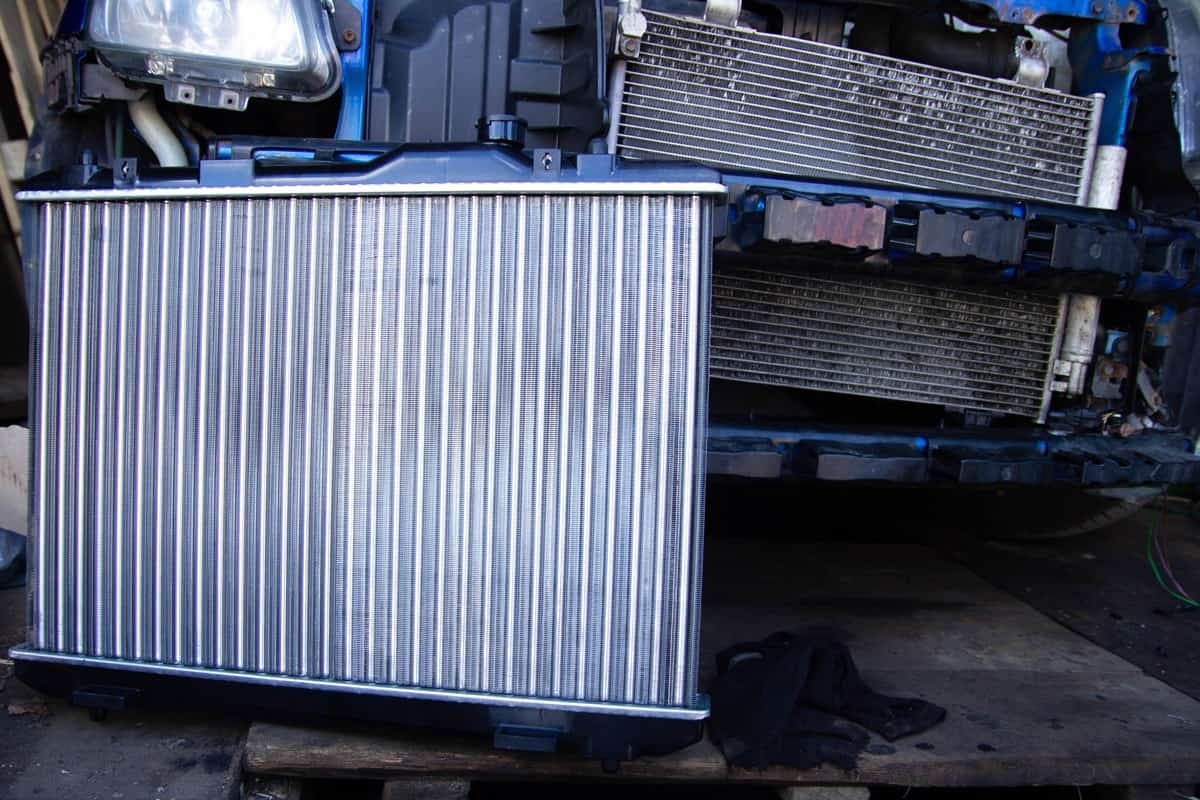
Purchase a brand-new car, and almost all manufacturers will give you a bumper-to-bumper warranty (this includes the radiator) lasting three years or 36,000 miles (whichever comes first) or five years or 60,000 miles. So this is already a guarantee that a radiator should last at least that long.
Typically, radiators should last for the life of your vehicle. A well-maintained radiator will last eight to 10 years. So, expect to replace your radiator once every decade.
In Closing
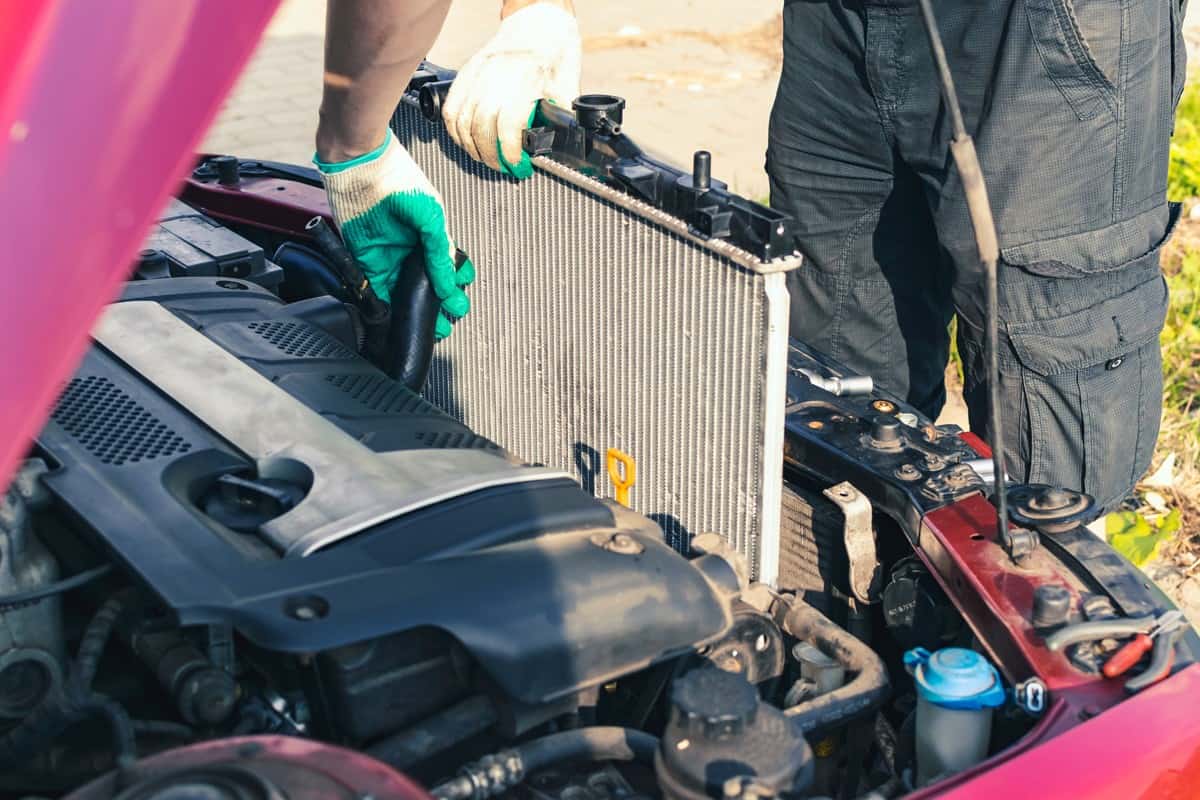
Having your radiator replaced can take two hours or a whole day. The mechanic's level of experience matters a lot. It's okay to ask outright if he has done this type of job before. Understand that the work will require a certain amount of time.
Check out these posts if you want to learn more about your car's radiator:
Bad Radiator Cap Or Head Gasket Issue? How To Tell?
How To Know If You Have A Clogged Radiator Or Blown Head Gasket?


